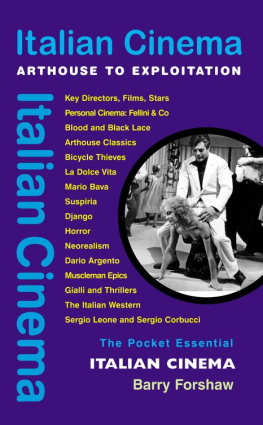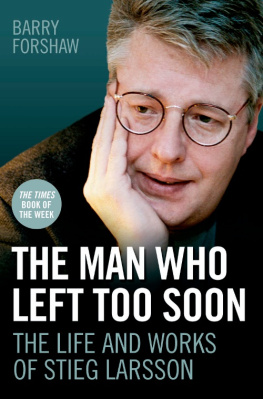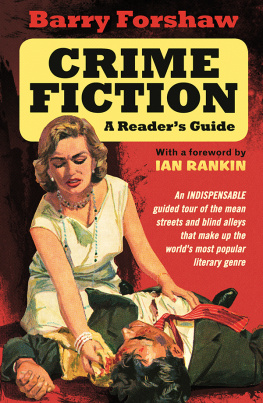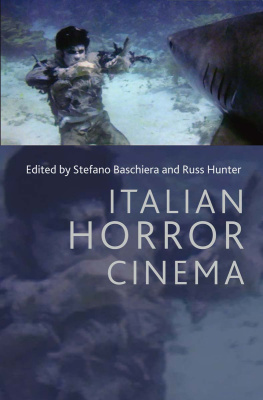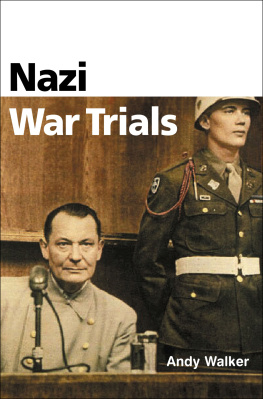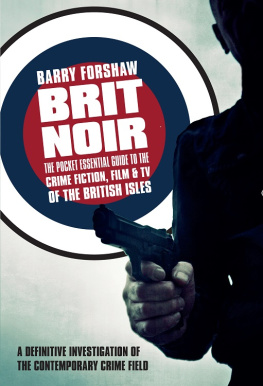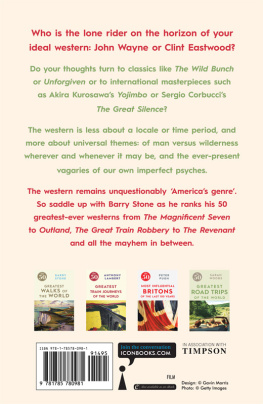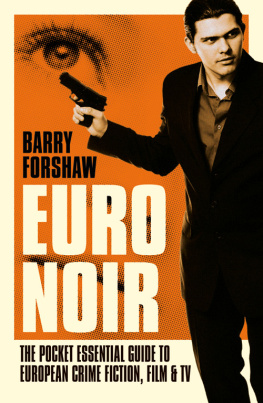Is sexuality the key to Italian cinema? From the unbridled sensuality of the orgy scenes in silent Italian cinema, through a topless Sophia Loren in a 1950s historical epic, to the image of Silvana Mangano, her skirt provocatively tucked into her underwear in the neorealist classic Riso Amaro (Bitter Rice), up to the erotic obsessions of Fellini and the more cerebral but still passion-centred movies of Antonioni, eroticism is ever-present. And then theres the popular Italian cinema: the acres of tanned flesh (both male and female) on offer in the many sword and sandal epics of the peplum era, through to the inextricable mix of sexuality and violence in the gialli of such directors as Mario Bava and Dario Argento. The latter may be said to be the final exhausted sigh of Italian concupiscence: a full-on liebestod in which death and sex meet in a blood-drenched, orgasmic finale.
Of course, theres far more to the genius of Italian cinema than this one motivating factor and, while the industry may be in abeyance today, its history represents one of the most glorious and energetic celebrations of the medium of cinema that any nation has ever offered. For many years, this astonishing legacy was largely unseen, but the DVD revolution is making virtually everything available, from Steve Reeves muscle epics to long-unseen Italian art house movies, the latter often known to cinephiles by name only. The element of social commitment, often a key theme in neorealism, gave way as the years progressed to delirious experiments with other genres (often with a strongly surrealistic overtone), but the one characteristic that most of the great (and not so great) Italian movies have in common is the sheer individualism of the directors. And this applies to the populist moviemakers, as much as to the giants of serious cinema. While Federico Fellini, Luchino Visconti and Michelangelo Antonioni have rightly assumed their places in the pantheon, such talented popular auteurs as Sergio Leone have acquired a copper-bottomed following over the years, after the almost derisory reaction that their otherwise highly successful movies initially received mainly due to the fact that Leone and Co. were using a popular genre, the Western, and doing something with it that no American director would dare to do, so radical was the rethink.
With the astonishing contributions over the centuries to the world of the arts (notably painting) that Italy was responsible for, it was hardly surprising that early silent Italian films were shot through with the same visual richness as the great works of such painters as Veronese and Caravaggio. Italian silent cinema is, of course, best remembered as being a great flowering of the epic and historical costume drama, notably the swarming, extras-packed Roman epics. La Presa diRoma (The Taking of Rome) in 1905 is often celebrated as the first important narrative movie, with its plot of the breaching of Porta Pia by Italian troops in the nineteenth century handled with great panache. A synthesis with the other arts was evident in the provision for music to accompany this film (this was, of course, the era of Respighi, whose highly coloured music is often disparagingly referred to as being like film music, as if that were the most deadly of criticisms).
Directors such as Giovanni Pastrone (born in 1883) showed an exuberant grasp of cinema in La Caduta diTroia (The Fall of Troy) in 1910, which demonstrated tremendous assurance in its use of massive crowds within equally massive sets. The same directors Cabiria (1914), possibly the best known of all Italian silent films, and Mario Caserinis Gli Ultimi Giorni di Pompei (The Last Days of Pompeii) in 1913, sounded a theme that was to reoccur in the grand days of the peplum epics. Few later versions of these epic themes had quite the panache of Pastrones and Caserinis work. Cabiria was extensively hand-tinted (a technique utilised most notably in the US with Lon Chaneys The Phantom ofthe Opera), and the staging of such scenes as that in which the heroine Cabiria is to be sacrificed to Moloch, the Carthaginian god, transcends (even to this day) the limitations of the silent era, and is still awe-inspiring.
Other elements that were to feature throughout the history of Italian cinema are also handled with great assurance here: elaborate special effects and cinematic trickery that created an epic sense of scale from limited resources. Italian audiences of the day flocked to these immense epics, and it is a testament to their ambition that their characterisation is still more subtle than one would expect of the era (although it is necessary for the modern viewer to grit their teeth through some semaphore-style silent film acting).
The film also marked the appearance of an iconic figure who was to feature (along with his myriad progeny) in many muscleman films of the 1960s, the super-strong hero Maciste. In Cabiria, he was played by the non-actor Bartolomeo Pagano, a strapping Genoan dockworker who became a star after his appearance in the film. Maciste was a tremendous hit with audiences, and he later reappeared fighting insuperable odds in many Italian epics of the 1960s, although his films would be retitled in the US and Britain, as non-Italian audiences were not familiar with the character: Maciste often became Hercules or Goliath.
Rather like the British cinema, the Italian cinema enjoyed periods of success followed immediately by hardship and crisis. A particularly swingeing economic crisis decimated the industry after the First World War, despite the fact that Italian films had been selling successfully in the American market. The films, however, continued to be made for appreciative local audiences, often built around the burgeoning star system, carefully cultivated by the filmmakers of the day. And while these stars (such as the charismatic Lidia Borelli) are little known today, the acting style employed is often surprisingly low-key and modern, as witnessed by Borellis seductive performance in Mario Caserinis Ma lAmore Mio Non Muore (Love Everlasting, 1913). The sexuality of the films of this era is often surprisingly up-front; Il Serpente (The Serpent, 1919) is Roberto Robertis erotic epic, full of imagery that remains deeply sensuous even to this day. The silent era was dominated by celebrated actresses such as Maria Giacobini and Diana Karenne, with some equally charismatic male stars making an impression.
The other arts continued to influence the cinema, and often various movements attempted to utilise the medium for their own purposes, such as the Italian Futurists. After Marinettis celebrated manifesto (which took the art world by storm when it appeared in LeFigaro in 1909), it was only natural that the Futurists would be fascinated by the apparatus of cinema, with their preoccupation with the interaction of movement, the human figure and machinery. The essay The Futurist Cinema (September 1916) made a strong plea for the cinema to embrace its essentially visual nature and become both impressionistic and dynamic.
Certainly, the darkest days of the Italian nation were the fascist era, and if Italian cinema of the day simply provided no more than escapism, there were (inevitably) few chances for the directors to do much else. Various sloe-eyed Lolitas seduced their male co-stars, Maciste battled various nemeses (both natural and supernatural). The dark days began in earnest in 1934 with the appointment of Luigi Freddi as head of the Direzione Generale per la Cinematografia, which was as sympathetic to the fascist movement as Freddi himself. A fund for the creation of Italian films was created, and one of the key elements of Italian cinema also dated from this period: the now famous film complex Cinecitt, which no less a figure than Mussolini himself opened in April 1937. As Italy continued to be ruled by a fascist government (from the 1920s to the 1940s), Mario Camerini was a key figure in this period. His

